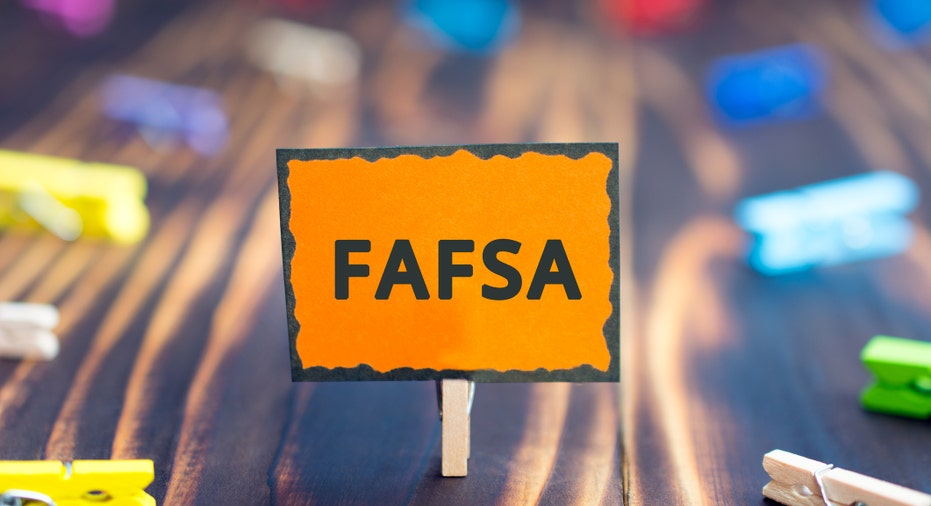How to prepare for the FAFSA

Planning ahead can make completing the FAFSA and qualifying for student aid less stressful. (iStock)
Completing the Free Application for Federal Student Aid (FAFSA) is a prerequisite for receiving financial aid for college. The Department of Education receives approximately 20 million FAFSA submissions each year, providing aid to an estimated 13 million students.
The information you provide on your FAFSA determines whether you qualify for federal student loans, grants, work-study, and other aid. Colleges and universities also use it when awarding school-based aid.
If you don't qualify for FAFSA, you may want to consider private student loans, which are listed on sites like Credible. Credible can help you compare student loan lenders to ensure you find the best deal available.
How to prepare for the FAFSA
If you plan to complete the FAFSA this year, keep these tips in mind.
- Create a Federal Student Aid ID before enrollment begins
- Have the necessary documents readily available
- Avoid mistakes, such as missing deadlines
- Submit your FAFSA as early as possible
- Get free help if you need it
1. Create a Federal Student Aid ID before enrollment begins
The Department of Education begins accepting FAFSA submissions in October of each year. One thing you'll need to complete the application is a Federal Student Aid ID.
This username and password allow you to access the Federal Student Aid system online and electronically sign your FAFSA. Students and parents should make their own FSA ID, said Holly Franquet, the student success director at Educational Credit Management Corporation (ECMC). Remember to make note of your respective IDs, since you'll need them to renew your FAFSA each academic year.
If you've hit your limit as a federal student loan borrower, visit Credible to explore private student loan options.
2. Have the necessary documents readily available
Completing the FAFSA means providing some basic information, including:
- Your name and social security number
- Driver's license number
- Physical and mailing address
- Name of the university or college you're interested in attending
- Which type of degree you're working toward (i.e. associate's degree, bachelor's degree, higher degree, etc.)
You'll also need to share details about household income, assets, and taxes. The documents you'll need for that include your parents' most recent tax returns and W-2s and your own, if applicable. Bank statements, non-retirement investment account statements, and any documentation showing child support or alimony income would also be necessary to finalize your FAFSA.
If your family's income was impacted in 2020 because of the coronavirus pandemic, you should still submit your 2019 tax return, said Franquet. But after completing your FAFSA, you should reach out to the financial aid office at the university or college you plan to attend to explain your current financial situation.
3. Avoid mistakes, such as missing deadlines
The deadline for submitting your FAFSA is June 30 so it's important to mark your calendar to make sure you get yours in on time.
Aside from that, Franquet said there are some other common mistakes to avoid, including:
- Being confused over where to enter student information vs. parent information
- Entering information that doesn't match Social Security records
- Entering information related to taxes incorrectly
- Not understanding whether to file as a dependent or independent student
It's also important to make sure you're not leaving spaces blank and that all the information you've included is accurate. Double-checking each page of your FAFSA before hitting submit can help you spot any errors and correct them.
WHERE AND HOW TO APPLY FOR FAFSA
4. Submit your FAFSA as early as possible
Technically, you have a fairly wide window of time to submit your FAFSA. But waiting could be a mistake if your school doles out financial aid on a first-come, first-serve basis.
Some colleges and universities may set the deadline for receiving the FAFSA earlier than the end of June. Additionally, your state can impose a different FAFSA deadline. But don't panic if it takes you a little longer to get your form in.
"Even if you submit the FAFSA late, you're eligible for a Federal Direct Loan of up to $5,500 for the first year of college," Franquet said. "After that, parents can apply for a Federal PLUS Loan that can cover up to the entire cost of attendance."
HOW TO COMPARE COLLEGE FINANCIAL AID OFFERS
5. Get free help if you need it
If you have questions about filling out the FAFSA, the Department of Education offers free help. The Federal Student Aid Information Center is an online resource that's designed to make completing the FAFSA easier. If you need additional assistance, you can ask questions via email, phone, or live chat.
Planning early can pay off
Remember, completing the FAFSA doesn't guarantee that you'll receive all the financial aid you need to pay for school. If your aid package isn't enough, you can try writing a financial aid appeal letter asking your school for more money.
Private student loans are another option to pay for school if you've exhausted other student aid options. When searching for private loans, it's important to compare interest rates and repayment terms to find a borrowing option that best fits your needs and budget.
Using an online tool like Credible makes it easy to view fixed and variable interest rates for private student loans from multiple lenders in one place.
You can also use an online student loan calculator to estimate your loan costs and monthly payments.